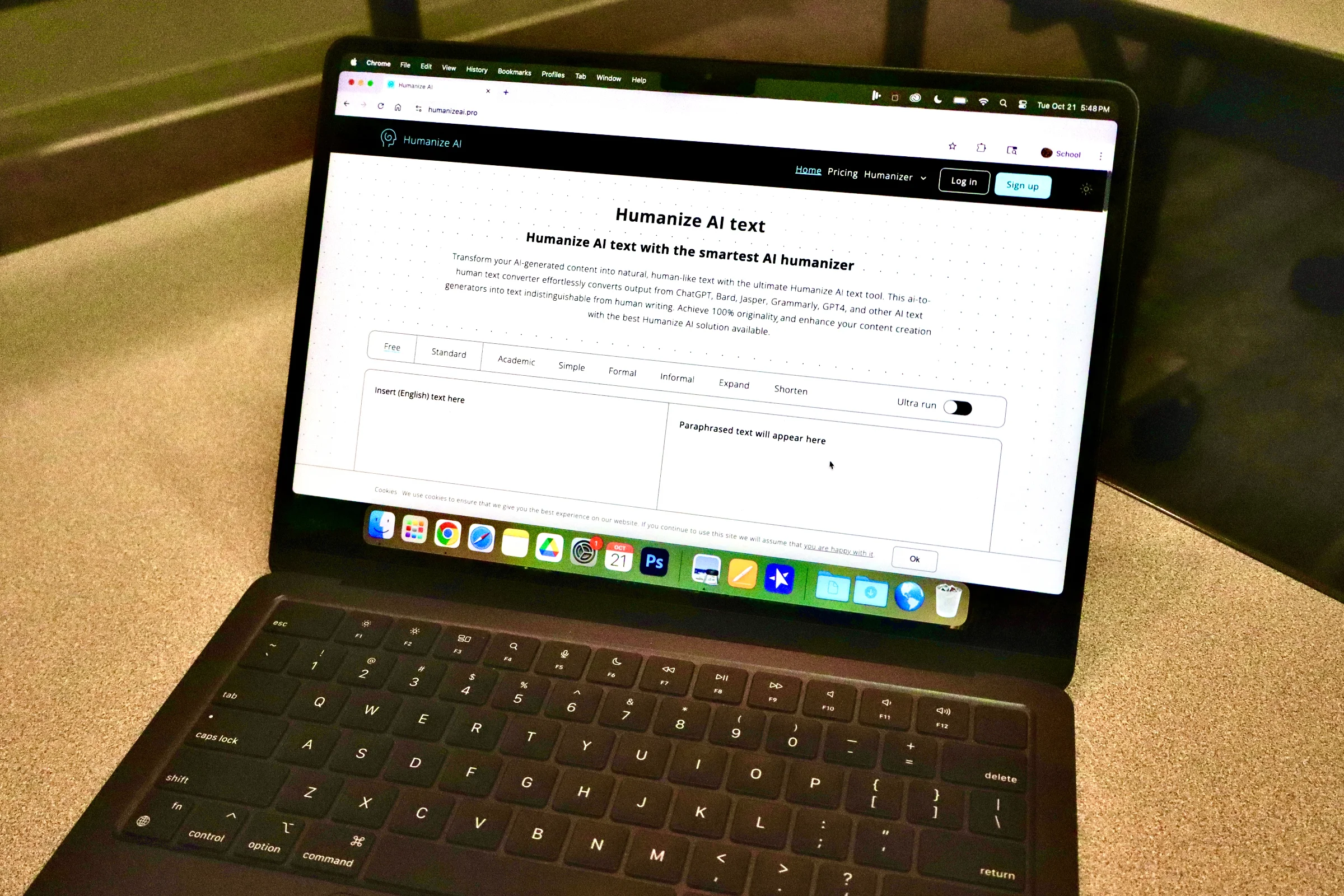Cons of AI in School
October, 2025
Photo: Katherine Chen
AI humanizers, such as humanizeai.pro, are sometimes used by students to bypass generative text detectors.
AI has rapidly seeped through all levels of society, permeating through each layer of academia — and it looks like it’s here to stay. Thus, the district’s ban on ChatGPT is a necessary measure to protect academic integrity and preserve critical thinking in our education. But this effort isn’t enough to halt the surge in AI usage; instead, it should be extended to other AI tools until there are clearer guidelines and safeguards to combat the innovation of AI humanizers. While the convenience and speed of AI models does offer some benefits, it has increasingly become disruptive in students’ learning. Worse, a solution to this issue is rather difficult to find.
Although the school restricted ChatGPT this summer, this effort isn’t enough to counteract the harms of AI. ChatGPT is just one of many forms of AI that can be exploited by students with tools such as Copilot and Gemini. Although these tools are admittedly useful, they blur the line between help and dependence. Their ability to instantly generate responses on seemingly any subject makes them extremely appealing to students and teachers alike. However, this creates an extremely slippery slope. Asking questions to strengthen understanding can turn into generating entire lab reports or papers. More importantly, utilizing AI simply to get the right answer fosters a toxic environment where the end product becomes more important than the learning process to get there. PHS principal Cecilia Birge explains that struggling is part of learning.
“Once you struggle, that learning acquired after the struggle is much deeper,” said Birge. “I’ve taught long enough to know that’s true, and I witness that every single day, right in our building.”
Forcing students to grapple with a certain topic not only deepens their understanding, but it also distills the topics they don’t know into targeted questions that they can then ask their teachers about the following day. This is especially true given that PHS students now have three days of built-in flexible learning time where they are able to seek out extra help. Hence, building a strong anti-AI narrative that promotes the struggle is imperative to our learning.
On the other hand, effects on education are not the only concern when it comes to generative AI. The usage of AI has been widely debated for its privacy issues, as users often intentionally or unintentionally share private information with it. As a result, ChatGPT requires parental consent for users under 18 to comply with the Children’s Online Privacy Protection Act. Unfortunately, most students probably aren’t aware of this policy and use it regardless. This problem extends beyond ChatGPT, which means students are still vulnerable to privacy breaches. Banning AI in school serves as a stand against careless AI usage for youth and also serves as a solution until students are able to be educated on proper usage ethics and regulation can be passed to enforce said proper usage.
In short, the district’s ban on ChatGPT is far from enough to stop the ever-growing presence of AI. Instead, the district should look to create a directive that creates a more holistic ban on AI to help combat issues such as decreasing academic integrity, privacy concerns, and environmental issues. While discussions such as this article attempt to create awareness, searching up ChatGPT just to see it banned serves as an ever present reminder of AI’s negative impact.